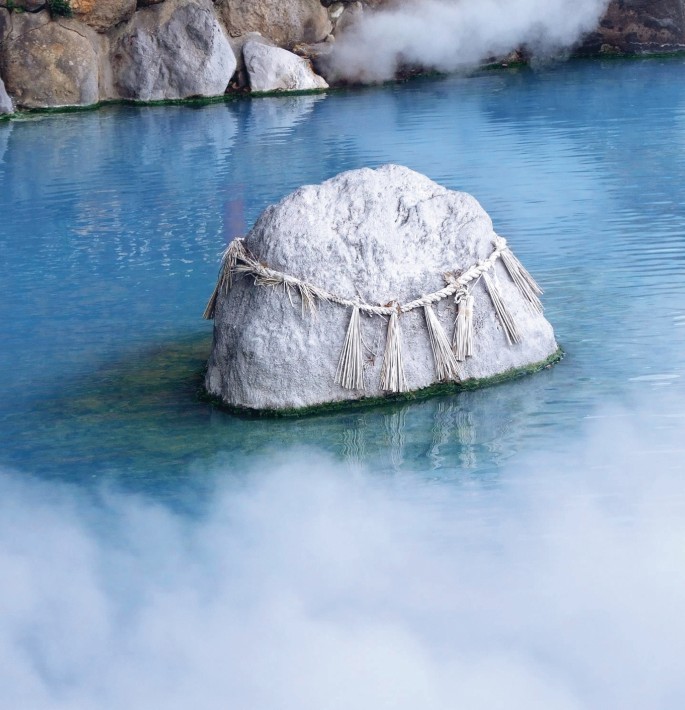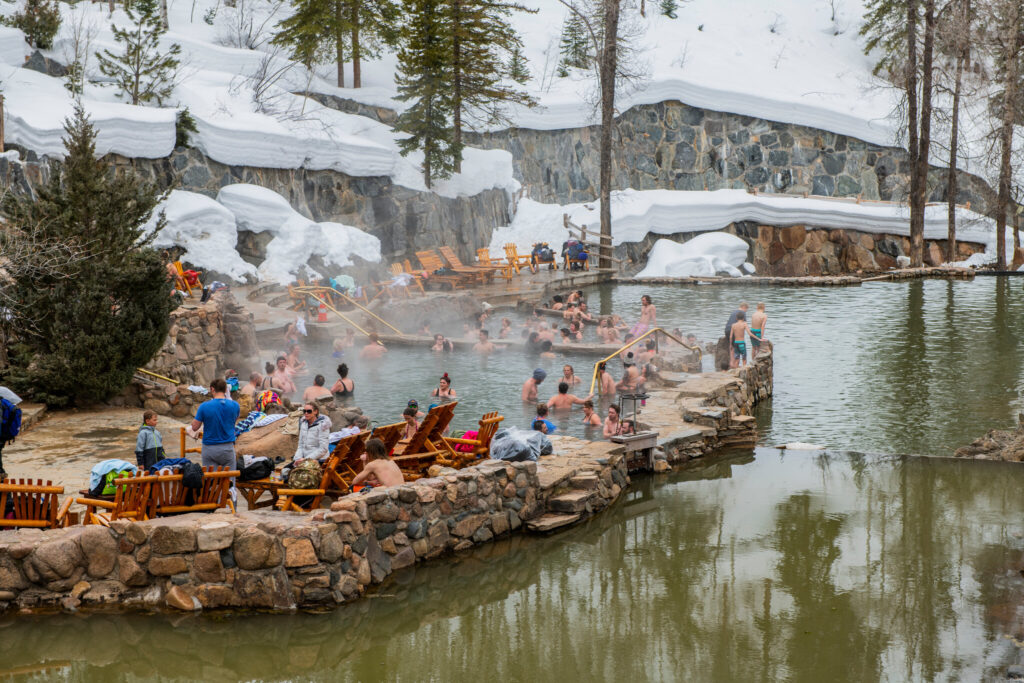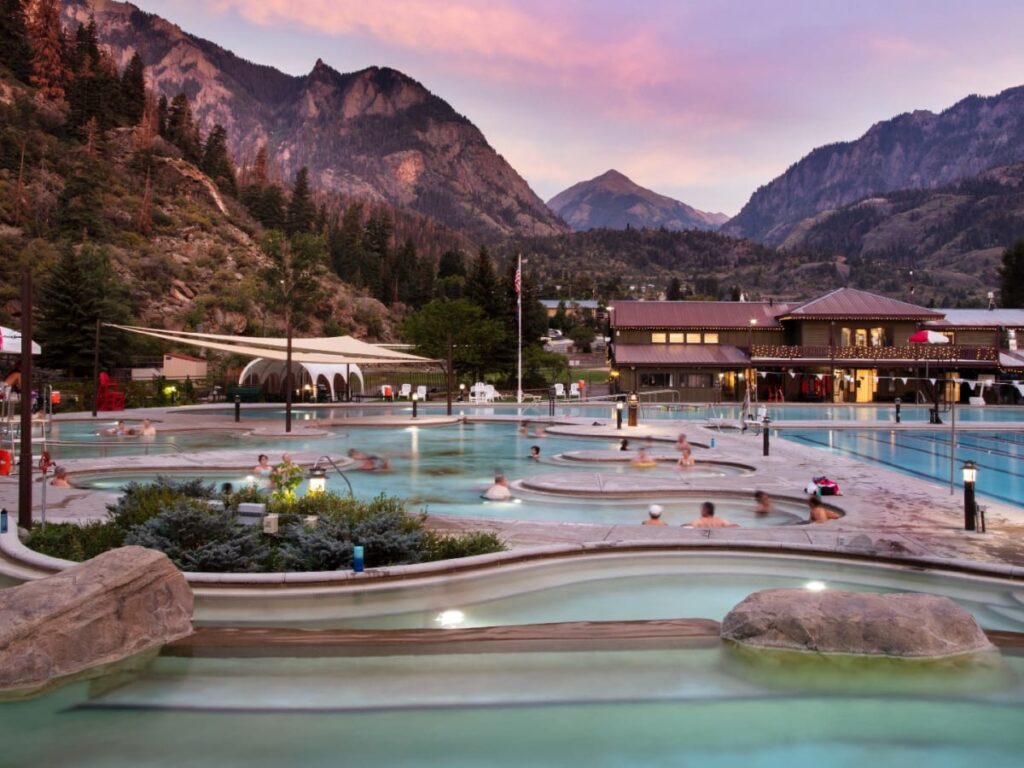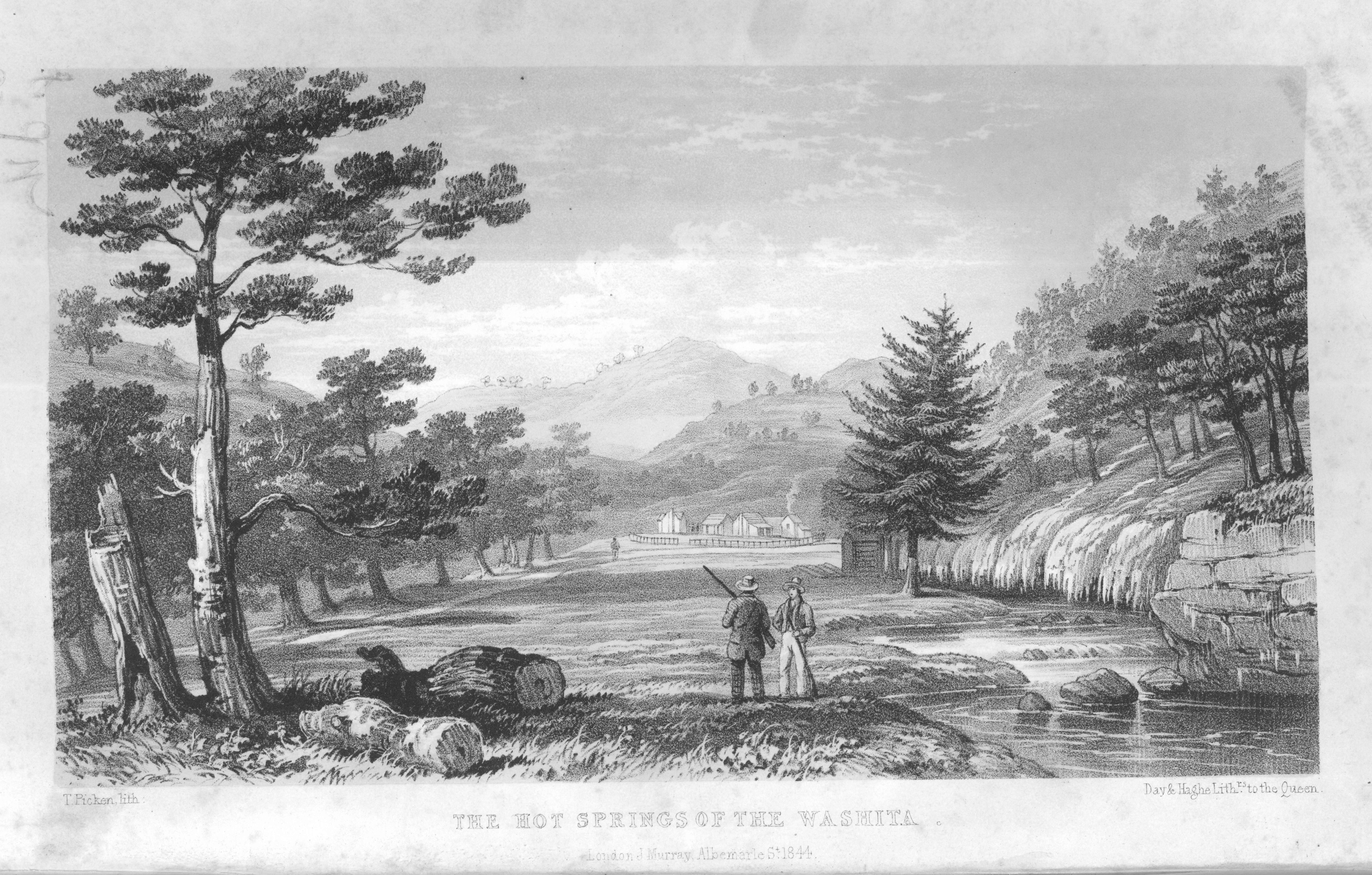Imagine immersing yourself in a warm, mineral-rich hot spring, enveloped by the soothing steam rising from the water. Now, picture this serene experience being shared by people from various cultures across time. In this article, we explore the intriguing ways different cultures have embraced and cherished hot springs throughout history. From the ancient Romans who saw them as sacred bathing sanctuaries to the Japanese who view them as therapeutic havens, the allure of hot springs transcends borders and speaks to our collective desire for relaxation and rejuvenation. Join us as we embark on a journey through time and discover the cultural significance of these natural wonders.
How Different Cultures Have Embraced Hot Springs Over Time
Hot springs have been an important part of human civilization for thousands of years. Cultures all over the world have recognized the therapeutic properties of these natural wonders, utilizing them for healing, relaxation, and spiritual purification. From ancient civilizations to modern spa culture, hot springs have played a significant role in the lives of people from diverse backgrounds. Let’s explore how different cultures have embraced hot springs over time.
Ancient Civilizations
Mesopotamia
Mesopotamia, the land between the Tigris and Euphrates rivers, was home to one of the earliest civilizations in human history. The ancient Mesopotamians highly valued hot springs for their medicinal properties. They believed that the water possessed healing abilities and used it to treat various ailments, including skin conditions, arthritis, and respiratory issues.
Egypt
Ancient Egyptians revered hot springs as sacred sources of rejuvenation. They considered them to be gifts from the gods and built temples and bathing complexes around natural hot springs. These bathing rituals were an integral part of their religious practices, believed to purify the body and soul. The healing properties of hot springs also found their way into ancient Egyptian medicine.
Ancient China
In ancient China, hot springs were known as “wenquan,” meaning “warm springs.” Chinese emperors and nobility regarded hot springs as symbols of wealth and power. These natural treasures were believed to promote longevity and vitality. The healing powers of hot springs were deeply ingrained in Chinese medicine, with thermal baths being prescribed to treat various ailments.
Ancient Rome
The Romans, famous for their elaborate bathhouses, held hot springs in high regard. They not only valued hot springs for their health benefits but also as social gathering places. The Roman bathhouses offered a space for relaxation, leisure, and socializing. These grand structures featured different temperature pools and elaborate architectural designs, showcasing the Romans’ appreciation for the therapeutic and communal aspects of hot springs.
Ancient Greece
Ancient Greeks also recognized the medicinal properties of hot springs, incorporating them into their healthcare practices. Hot springs were believed to provide relief from a wide range of ailments, including muscle pain, arthritis, and digestive issues. Additionally, the Greeks associated hot springs with divine powers and considered them to be places where gods and goddesses would reside.

Indigenous Cultures
Native American Tribes
The Native American tribes across North America have long embraced hot springs for their healing and spiritual significance. Many tribes considered hot springs to be sacred and performed ceremonies and rituals in their vicinity. The hot mineral-rich waters were believed to cleanse and purify both the body and the soul. Native Americans also utilized hot springs for their therapeutic properties, using them as natural remedies for various ailments.
Aboriginal Australians
Hot springs hold great cultural importance to the Aboriginal Australians. These natural thermal pools, known as “bujeri,” are considered sacred and are often used for healing and spiritual purposes. Aboriginal Australians believe that hot springs have the power to rejuvenate the spirit and restore harmony within the body. They also utilize the warm waters for relaxation and as a place of communal gatherings.
Maori Culture
In New Zealand, the indigenous Maori people have a deep connection with hot springs, or “waiariki.” Maori culture places great emphasis on holistic well-being, and hot springs play a significant role in their traditional healing practices. The Maori believe that the geothermal waters possess curative properties and use them for therapeutic purposes. Hot springs are also regarded as sites of spiritual and cultural significance.
Inuit Culture
The Inuit people of the Arctic have adapted to their unique environment and have developed their own ways of utilizing hot springs, particularly in the form of natural hot pools. These natural pools, created by hot springs that push through the frozen ground, provide the Inuit with a source of warmth, relaxation, and relief from the extreme cold. Hot springs serve as important gathering places for the Inuit community, allowing for socialization and the sharing of cultural traditions.
Traditional Japanese Onsen
Historical Background
In Japan, traditional hot springs, known as “onsen,” have a rich historical background. The Japanese have been enjoying the therapeutic benefits of hot springs for centuries. Onsen culture dates back to at least the 8th century, and these natural hot pools have played a significant role in Japanese society ever since.
Cultural Significance
Onsen have deep cultural significance in Japan and are considered a vital part of the country’s heritage. The Japanese view onsen as a way to cleanse the body and rejuvenate the soul. Taking regular trips to onsen is a popular practice among the Japanese, not just for relaxation but also for maintaining good health and well-being.
Rituals and Etiquette
Japanese onsen culture has specific rituals and etiquette that must be followed. Before entering an onsen, it is customary to thoroughly cleanse your body in the designated washing area. Once clean, you can immerse yourself in the hot spring water. It is important to observe proper bathing etiquette, such as not splashing or making excessive noise. Tattoos are generally not allowed in many traditional onsen, as they are associated with the yakuza, a Japanese organized crime syndicate.
Types of Onsen
There are various types of onsen in Japan, each with its own unique characteristics and mineral compositions. Some onsen may be rich in sulfur, while others may contain minerals like iron, calcium, or magnesium. Each type of onsen is believed to have different healing properties and therapeutic benefits, catering to different health needs.

Healing Benefits
Thermal Healing Properties
The thermal properties of hot springs contribute to their healing benefits. The warm water helps dilate blood vessels, improving circulation throughout the body. This increased blood flow can promote faster healing, reduce inflammation, and alleviate pain. The heat from the hot springs can also soothe sore muscles and joints, providing relief from conditions like arthritis.
Relaxation and Stress Relief Hot springs provide a serene and peaceful environment that helps promote relaxation and reduce stress. The combination of warm water, tranquil surroundings, and the therapeutic effects of the minerals in the water can help calm the mind and body. Spending time in a hot spring can induce a state of deep relaxation, reducing tension and anxiety.
Pain Management
Hot springs have been used as a natural form of pain management for centuries. The heat and buoyancy of the water can provide relief from muscle pain, joint stiffness, and backache. The minerals found in hot springs, such as sulfur and magnesium, have analgesic properties and can help alleviate pain associated with conditions like fibromyalgia and rheumatoid arthritis.
Skin Conditions
The mineral-rich water of hot springs has been known to benefit various skin conditions. The sulfur present in hot springs is known for its anti-inflammatory and antibacterial properties, making it effective in treating skin conditions like eczema, psoriasis, and acne. Regular soaking in hot springs can improve the overall health and appearance of the skin.
Respiratory Health
Hot springs are often recommended for respiratory health issues. The warm steam from the hot springs can help relieve congestion and open up airways, making it easier to breathe for individuals suffering from asthma, bronchitis, or allergies. Inhaling the mineral-infused steam can also help reduce inflammation in the respiratory system.
Blood Circulation
The heat and pressure from hot springs stimulate blood circulation, which has a positive impact on the body’s overall health. Improved blood circulation can enhance the delivery of oxygen and nutrients to various organs and tissues, promoting their optimal functioning. It can also help remove waste products and toxins from the body more efficiently.
Religious and Spiritual Significance
Hot Springs in Religious Practices
Hot springs hold immense religious significance in many cultures. They are often considered sacred sources of water that are spiritually purifying. In various religious practices, hot springs are associated with purification rituals and are believed to cleanse both the body and the soul. They are regarded as places where one can draw closer to the divine and experience spiritual renewal.
Purification Rituals
Hot springs have been used in purification rituals across different cultures. These rituals involve immersing oneself in the healing waters to cleanse the body of impurities, both physical and spiritual. The act of purification in hot springs is seen as a way to shed negative energy and achieve a state of inner balance and harmony.
Sacred Sites
In many cultures, hot springs are considered sacred sites. Ancient civilizations often built temples and shrines around hot springs to mark their spiritual significance. People would visit these sites to worship, seek blessings, and engage in religious ceremonies and practices. The belief in the divine power of hot springs has given rise to sacred pilgrimage sites in various parts of the world.
Spiritual Beliefs and Hot Springs
The healing properties of hot springs are often attributed to spiritual beliefs rooted in nature. Many cultures view hot springs as a manifestation of the earth’s energy and consider them to be a connection between the physical world and the spiritual realm. The harmonizing and rejuvenating effects of hot springs are believed to support spiritual well-being and personal transformation.

Hot Springs in Modern Spa Culture
Revival of Ancient Therapeutic Practices
In recent years, there has been a resurgence of interest in the therapeutic practices of ancient cultures, including the use of hot springs. Spa resorts and wellness centers around the world have incorporated hot springs into their offerings, aiming to provide guests with a holistic approach to relaxation, rejuvenation, and well-being. This revival reflects the enduring appeal and effectiveness of hot springs as a natural healing modality.
Spa Tourism
Hot springs have become major attractions in the tourism industry, with many countries capitalizing on their natural geothermal resources. Visitors can now enjoy the benefits of hot springs in luxurious spa resorts and wellness retreats, where they can immerse themselves in rejuvenating pools and partake in various therapeutic treatments. Spa tourism provides an opportunity for people to experience the healing powers of hot springs while exploring different cultures and destinations.
Medical Wellness Resorts
Hot springs are increasingly recognized for their potential in medical wellness. Many wellness resorts now offer specialized treatments and therapies utilizing hot spring waters to target specific health conditions. Medical wellness resorts combine the healing properties of hot springs with medical expertise, providing a comprehensive approach to health and well-being.
Hot Springs and Hydrotherapy
Hydrotherapy, the use of water for therapeutic purposes, is a prominent component of modern spa culture. Hot springs serve as natural sources for hydrotherapy practices. Spa-goers can enjoy various hydrotherapy treatments, such as hydro massage, water jets, and mineral baths. The combination of warm water, buoyancy, and water pressure creates a unique therapeutic experience that promotes relaxation, reduces pain, and improves overall well-being.
Hot Springs as Community Gathering Places
Socializing and Networking
Hot springs have traditionally served as community gathering places, fostering social connections and providing opportunities for bonding. In many cultures, hot springs have been meeting spots where people come together to relax, engage in conversations, and forge relationships. The warm and inviting atmosphere of hot springs creates a natural setting for socializing and networking.
Traditions and Festivals
Hot springs are often associated with cultural traditions and festivals. Communities around the world celebrate hot springs through various events, showcasing their cultural heritage and traditions. Festivals centered around hot springs may feature music, dances, traditional ceremonies, and local cuisine, offering a unique insight into the culture and traditions of the region.
Hot Springs Communal Baths
In some cultures, communal baths have been an integral part of hot spring culture. People gather in public hot spring baths or onsens to mingle, relax, and enjoy the healing waters together. Communal bathing promotes a sense of community and togetherness, providing an opportunity for individuals to connect with others while experiencing the benefits of hot springs.
Cultural Events
Hot springs often serve as venues for cultural events and performances. The tranquil and picturesque surroundings of hot springs make them ideal locations for exhibitions, concerts, and art installations, allowing visitors to appreciate both the natural beauty of the hot springs and the cultural expressions of the community.

Hot Springs and Geothermal Energy
Utilizing Geothermal Resources
Hot springs are geothermal phenomena that harness the earth’s natural heat. Beyond their therapeutic and cultural significance, hot springs play a crucial role in the utilization of geothermal resources. The heat from hot springs can be harnessed to generate electricity and provide heating for homes and buildings. This development of geothermal energy benefits communities by providing sustainable and renewable sources of power.
Renewable Energy Generation
Geothermal power plants harness the heat energy from hot springs to generate electricity in an environmentally friendly manner. By using renewable resources, such as hot springs, geothermal energy contributes to reducing greenhouse gas emissions and dependence on fossil fuels. Countries like Iceland have extensively utilized geothermal energy to become leaders in sustainable energy production.
Geothermal Power Plants
Geothermal power plants convert the heat from hot springs into electricity. The process involves drilling wells into the ground to access the hot water or steam below. The thermal energy is then used to turn turbines and generate electricity. This clean and renewable form of energy has the potential to meet the rising global demand for electricity while reducing carbon emissions and promoting a sustainable future.
Environmental Concerns and Conservation
Protecting Natural Hot Springs
As hot springs continue to attract visitors, it is vital to protect and preserve these natural treasures. Excessive human activity and pollution can harm the delicate ecosystems associated with hot springs. Conservation efforts should include maintaining the water quality, preserving surrounding habitats, and practicing responsible tourism to ensure the longevity of hot springs as sustainable resources.
Sustainable Geothermal Development
While geothermal energy has significant environmental benefits, its development should also prioritize sustainability. This includes responsible drilling techniques, monitoring the impact on local ecosystems, and mitigating potential risks. By implementing sustainable practices, geothermal development can coexist harmoniously with the natural environment, ensuring the long-term viability of hot springs as renewable energy sources.
Balancing Tourism and Conservation
Hot springs attract tourists from all over the world, providing economic opportunities for local communities. However, the increasing popularity of hot springs tourism can place pressure on fragile ecosystems and cultural sites. To maintain a balance between tourism and conservation, it is important to implement sustainable tourism practices, such as limiting visitor numbers, educating tourists about responsible behavior, and supporting local initiatives for environmental protection.
Hot Springs Around the World
Hot Springs in Europe
Europe is home to numerous hot springs known for their healing properties and picturesque surroundings. Countries like Iceland, Hungary, and Italy are renowned for their geothermal hot springs, which attract visitors seeking relaxation, wellness, and a connection with nature. Whether it’s the Blue Lagoon in Iceland, the healing waters in Bath, England, or the thermal baths in Budapest, Europe offers a diverse range of hot springs experiences.
Hot Springs in Asia
Asia is abundant in hot springs, with many countries embracing their therapeutic and cultural significance. Japan, South Korea, China, and Taiwan are known for their thriving onsen culture, where locals and tourists alike can immerse themselves in ancient healing traditions. Hot springs in Asia offer unique experiences, from rustic natural pools hidden in the mountains to luxurious spa resorts in bustling cities.
Hot Springs in North America
North America has a rich hot springs heritage, with various regions boasting natural geothermal wonders. From the famous geysers of Yellowstone National Park in the United States to the hot springs and thermal baths of British Columbia in Canada, North America offers a diverse range of hot springs experiences. These hot springs attract visitors with their scenic beauty, healing properties, and opportunities for outdoor adventures.
Hot Springs in South America
South America is known for its diverse landscapes, and hot springs add to the natural beauty of the continent. Countries like Peru, Chile, and Ecuador have hot springs nestled in stunning settings, including high-altitude regions and volcanic areas. South American hot springs provide not only a chance to relax and rejuvenate but also an opportunity to immerse oneself in the awe-inspiring beauty of the Andean landscapes.
Hot Springs in Africa
Africa is home to hidden natural hot springs, offering unique experiences for those who seek relaxation and exploration. Countries like Morocco, Kenya, and Ethiopia have hot springs with different mineral compositions. In Morocco, the traditional hammams combine the therapeutic qualities of hot springs with local cultural practices, providing visitors with an all-encompassing wellness experience.
Hot Springs in Oceania
Oceania is blessed with hot springs that showcase the region’s geothermal richness. From the thermal wonders of Rotorua in New Zealand, known for its Maori cultural significance, to the natural hot springs of Papua New Guinea and Australia’s hot springs along the Great Ocean Road, Oceania offers a diverse range of hot springs experiences. The healing waters of these hot springs are complemented by the breathtaking landscapes that surround them.
In conclusion, hot springs have captured the imagination and appreciation of cultures around the world. From ancient civilizations to modern spa culture, hot springs have been valued for their healing properties, spiritual significance, and ability to bring communities together. As we continue to understand the benefits of hot springs for physical and mental well-being, it is crucial to preserve and protect these natural wonders for future generations to enjoy. Whether seeking relaxation, cultural immersion, or sustainable energy solutions, hot springs continue to demonstrate their enduring importance and appeal.
